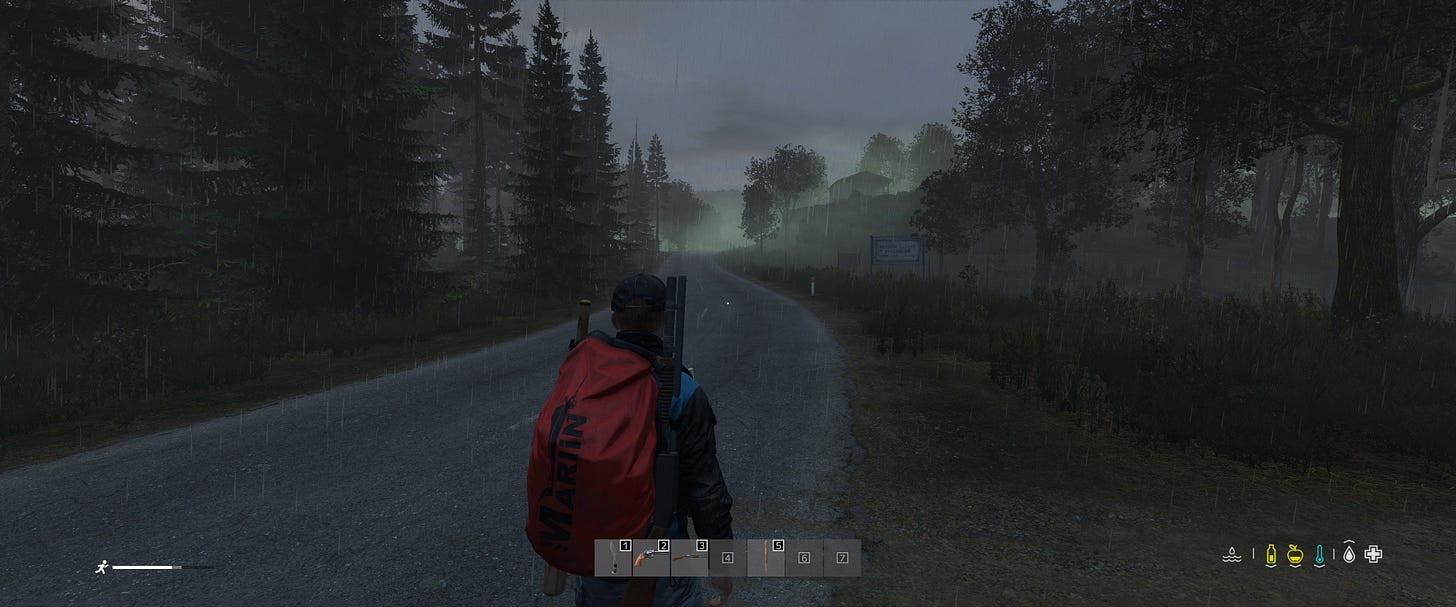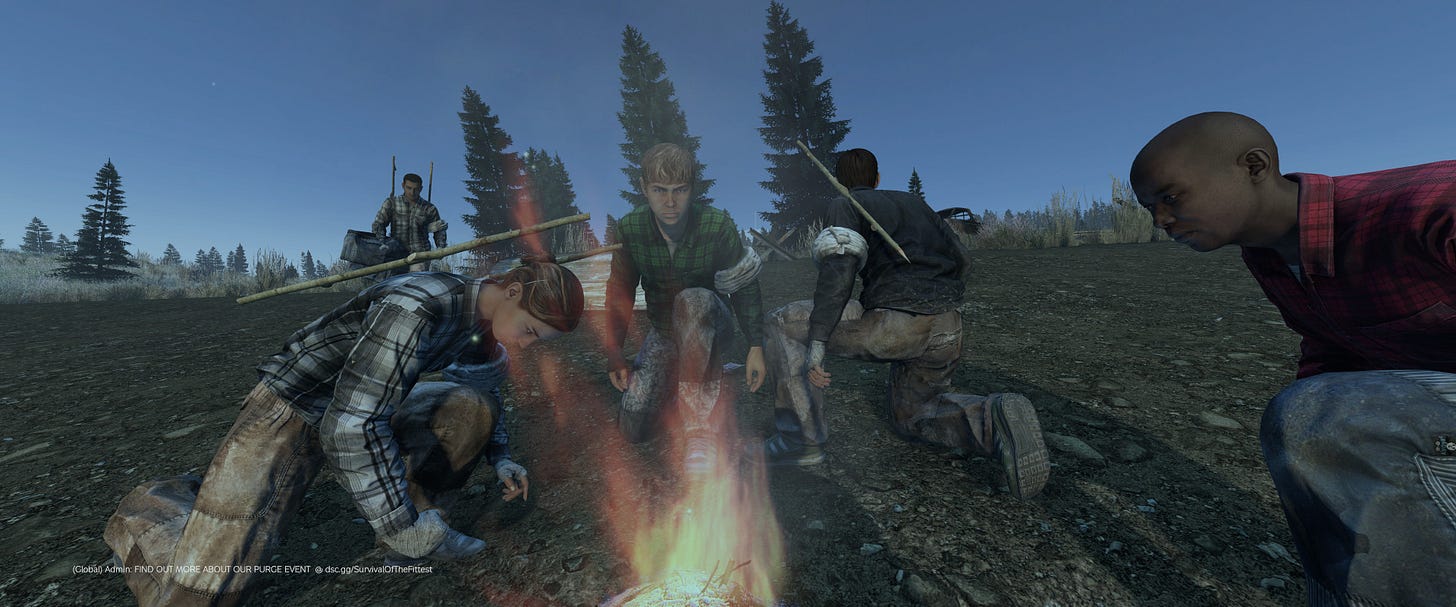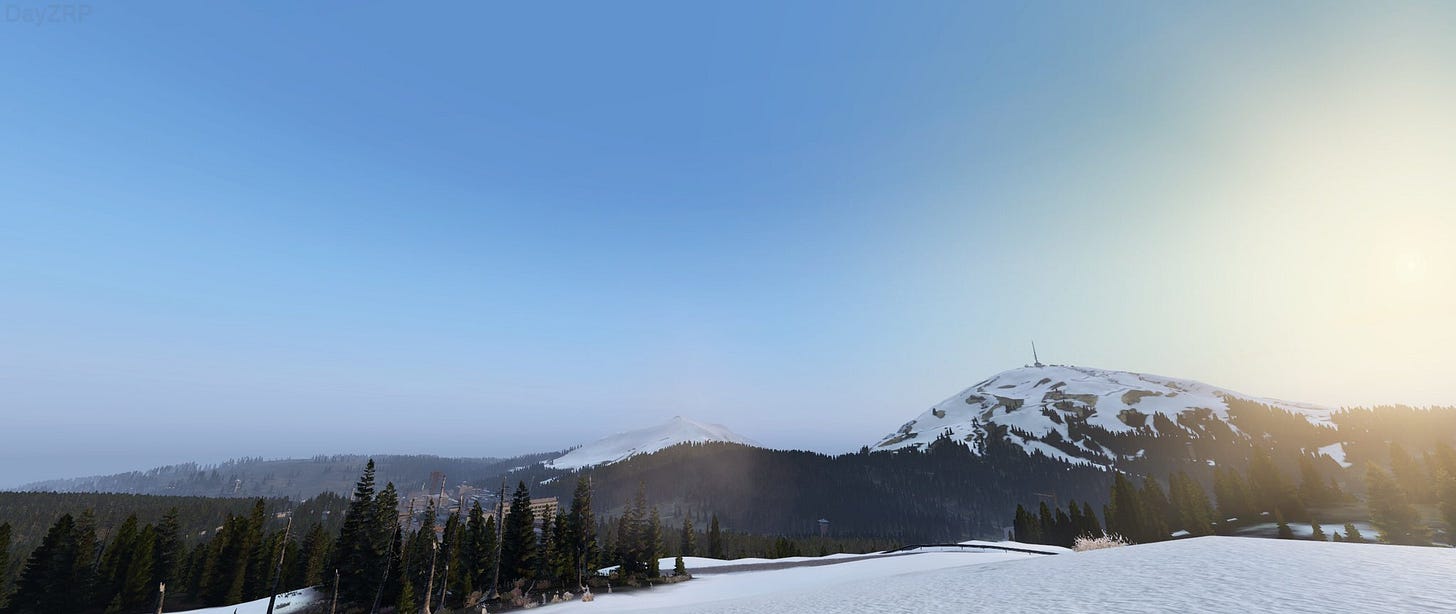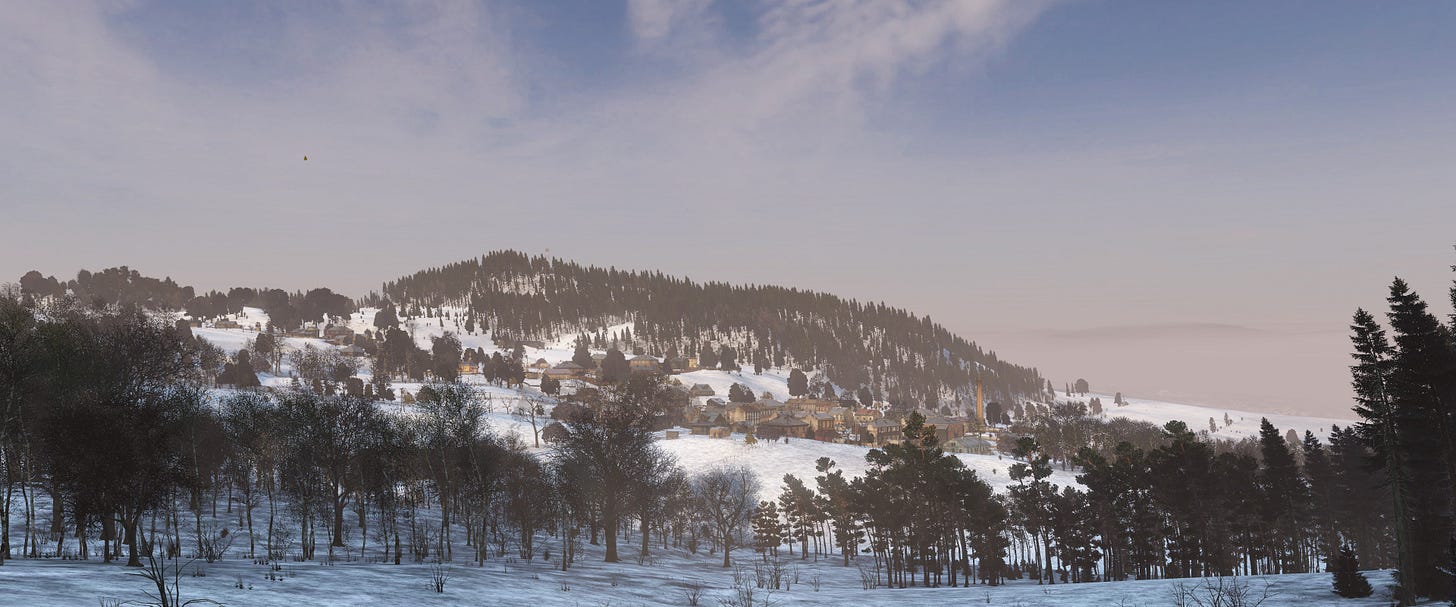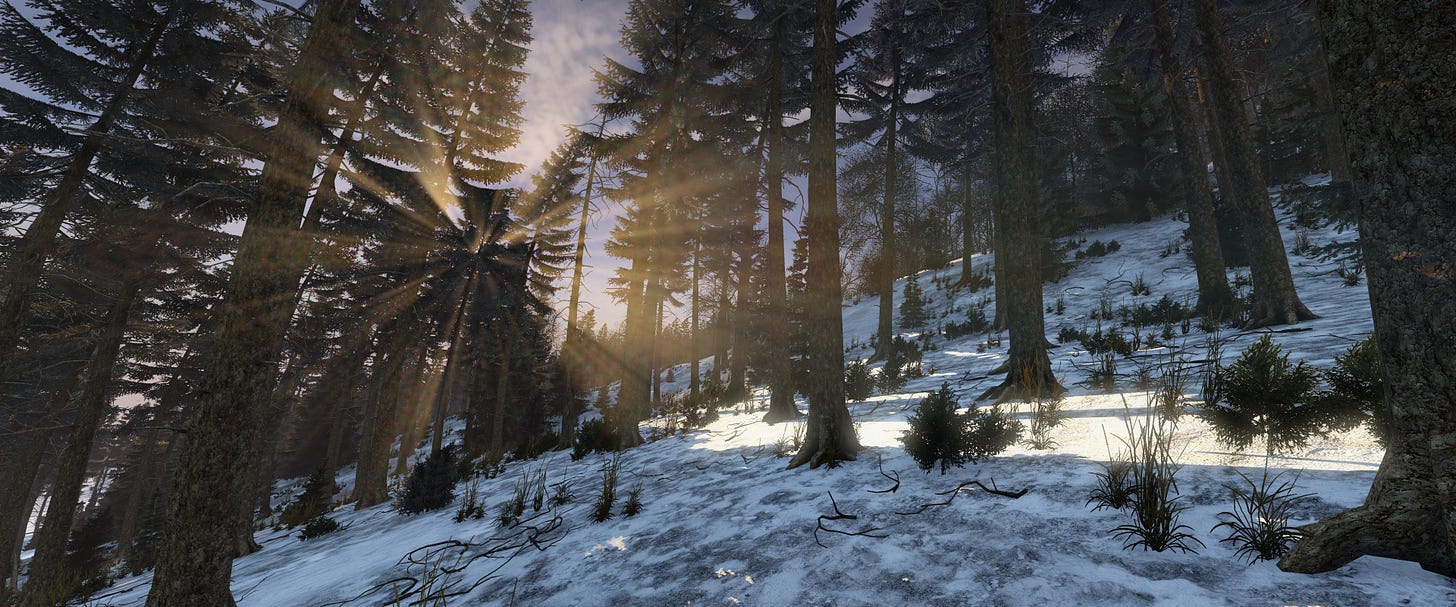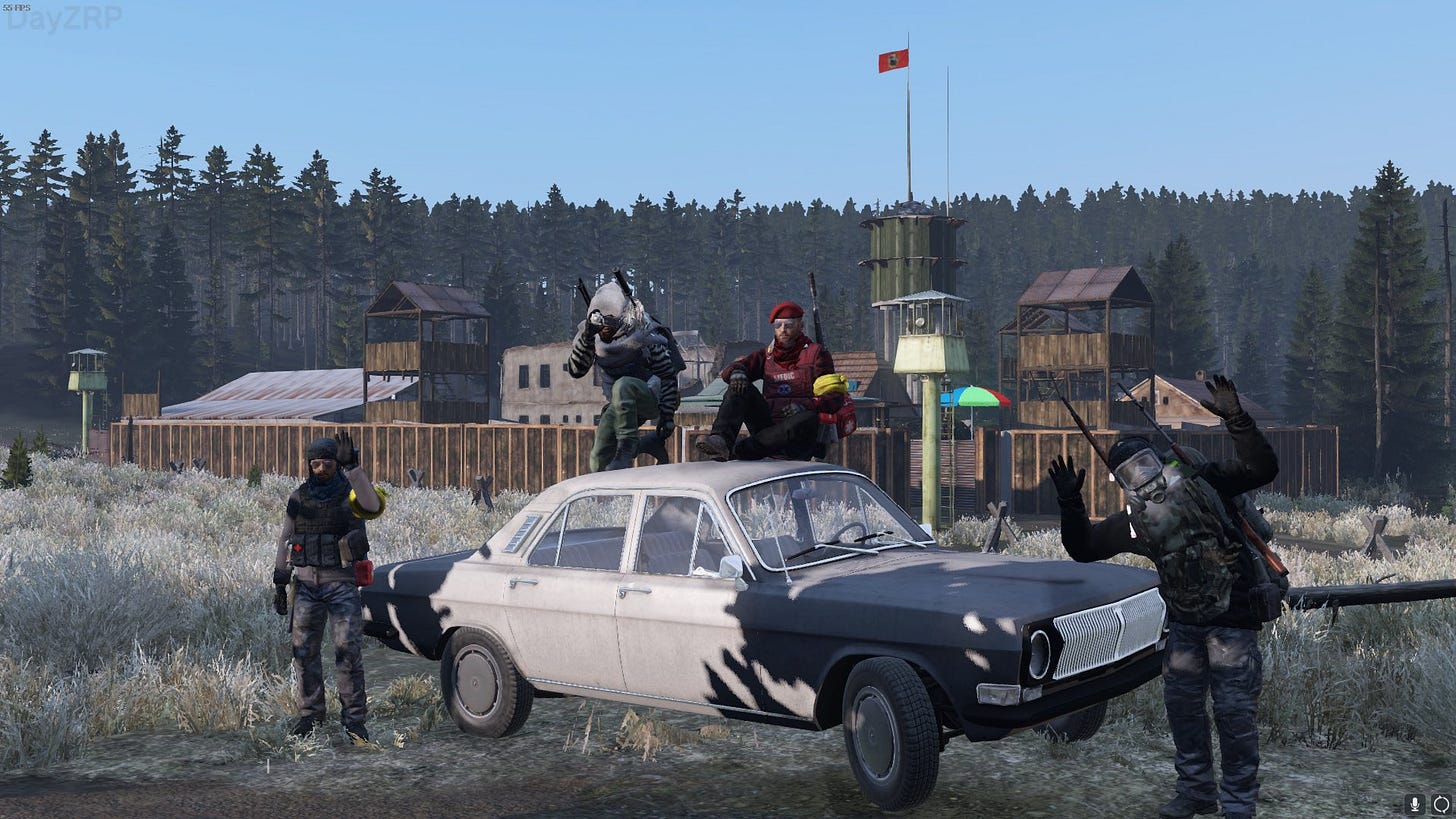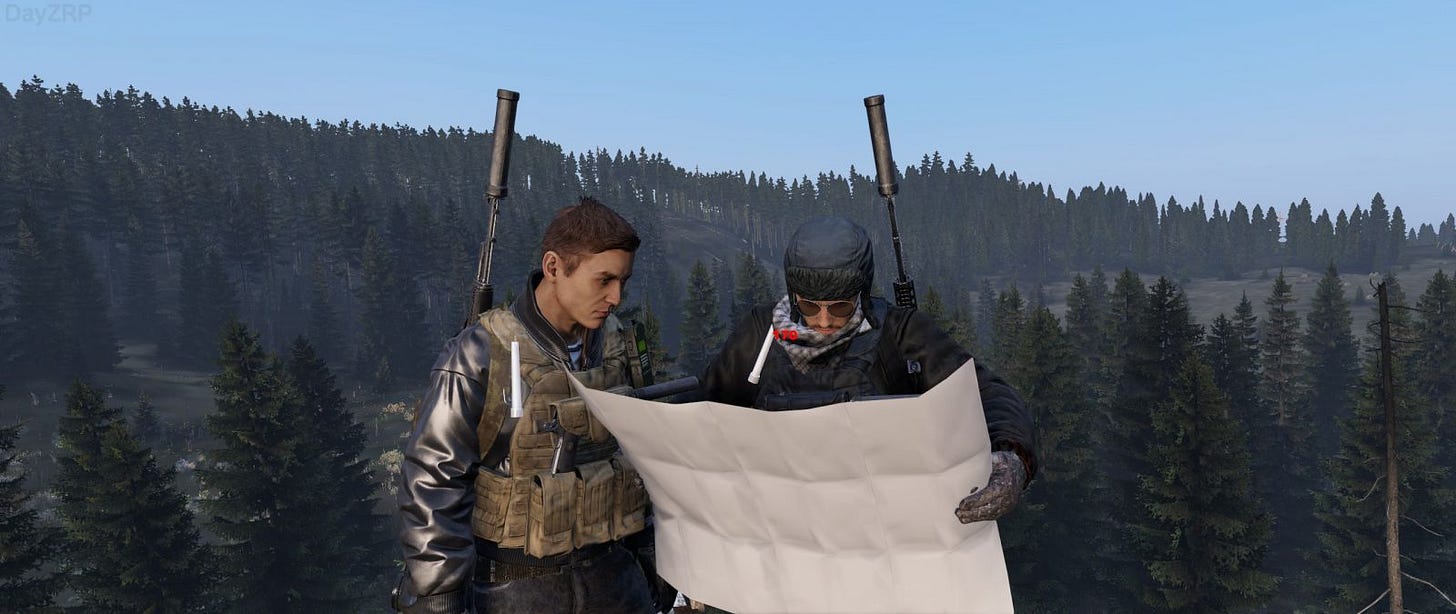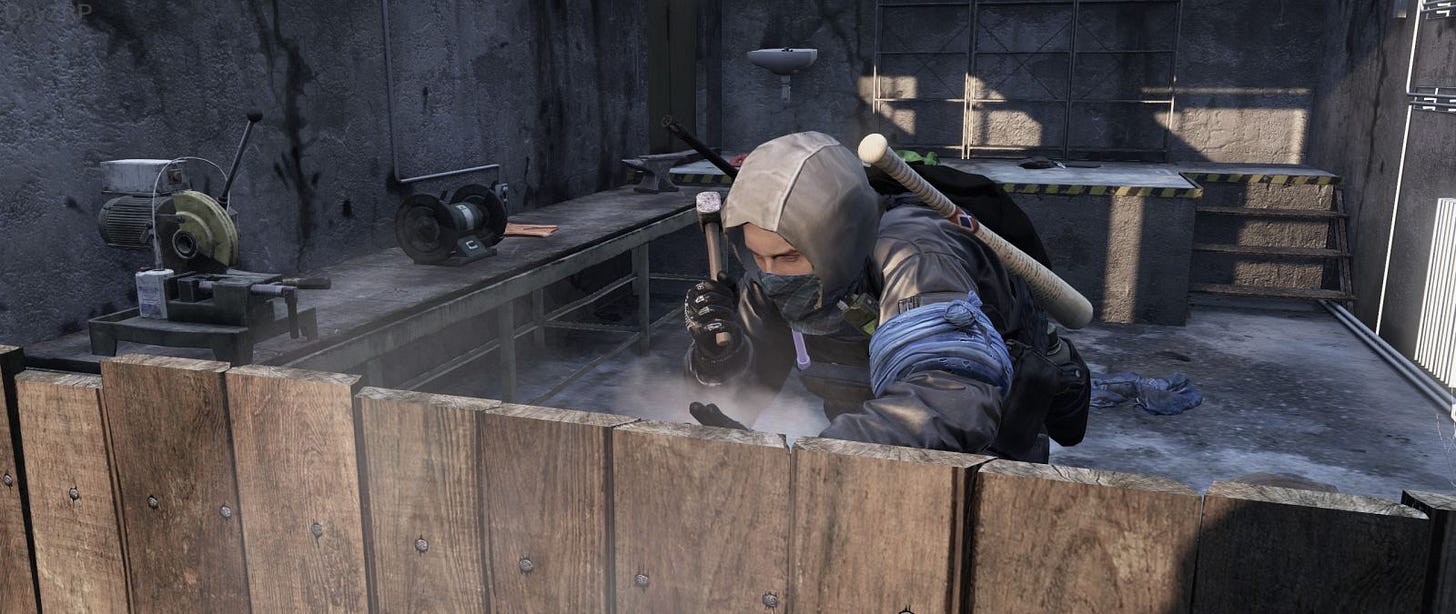100 DayZ Later: 10 Years of Zombie Survival
2600+ hours later, this is the lasting legacy of DayZ
What was just a few moments felt like an eternity.
Kneeling on the ground with my hands tied behind my back, a burlap sack on my head, and whispers around me I knew my time was coming to a close. One of my captors took the cover off my head and stood before me in the same attire as the rest: yellow raincoats, no pants, and wearing the masks from PayDay. The one in the centre came forward and asked me a question.
“What blood type are you?”
This is not the ideal question you want to be asked in a land like Chernarus.
Before I had a chance to answer my question, one of the now apparent cult members started walking towards me with a blood bag kit. Luckily for me, I had a friend waiting on the other side of the church doors with a shotgun and a very itchy trigger finger.
Once again, what was just a few moments felt a lot faster this time as we looted the corpses of the dead cultists. What we came to do here was complete: my partner the gunner, and myself the bait, our target, the cult of the red (or at least that’s what we dubbed them.)
This story is just one of so many I’ve experienced over the 10 years that DayZ has been in and out of early access: Bohemia Interactive celebrates a decade of survival in a zombie apocalypse and despite their tumultuous journey is here to remind us that they are very much alive and kicking.
The First 100 Hours
Before launching into a standalone early access game in December 2013, our first foray into a land filled with zombies came in the form of a mod. The concept of DayZ originally lived within the realistic military simulator Arma II developed by Bohemia Interactive and directed by Dean Hall and Brian Hicks.
The premise is simple: each player wakes up on the coastline of the fictional location of Chernarus with nothing but the clothes on their back, an apple, and a vast open world to explore. It doesn’t take too long to realize that DayZ is an unforgiving game: players are not just surviving against zombies in the game, they’re surviving against the needs of sustaining life itself. Food, warmer clothing, weapons, and tools are all needed to survive in this game. Instead of vast, lengthy tutorials, players are treated to learning about the harsh realities of surviving these lands organically and through many, many deaths.
But it’s not just basic things like if you’re hungry, eat: if you, say, go hunting and field dress a stag, you have to make sure you wash your hands after to avoid the risk of getting a bacterial infection. Oops, you forgot to wash your hands and now you’re infected? Time to take some medicine. You don’t have any? Well, time to venture into town in the hopes of finding not just any medicine, but the right medicine to cure you.
It’s just too bad that the particular town you’re going to is filled with players who have decided to become a cannibalistic death cult.
DayZ is a constant dance between risk and reward and doing it over and over again. The game itself does not have an end goal: it’s an open-world survival game without a story, missions, fancy map markers, or even display names for players you come across. DayZ’s x-factor is the fact that it’s all anonymous, a true survival experience where betrayal is as common as catching a cold.
But this dance was not always perfect, in many ways it’s still not: while it was released in early access in 2013, it didn’t leave early access till 5 years later. It also didn’t leave early access without its fair share of issues.
The Long Road
DayZ has had a very long development time which included various issues that plagued the survival experience. After 10 years, here’s a short list of some of the horrors I’ve witnessed that are unrelated to the context of the game: wildly differing performance woes, ladders becoming apex predators, zombies phasing through walls, rampant hackers, and more.
With these many issues in mind, why is it that DayZ broke its concurrent record just weeks ago, higher than even when the game launched? To address that, we could go through the years of DayZ's development, looking at the updates that changed the tide in Bohemia’s favour, but this story isn’t about that.
This story is about appealing to you, the reader, to take a moment and learn about what makes DayZ the pinnacle of survival gaming in a market deeply saturated by those who try to capture its magic.
This is also the story of how DayZ helped me turn my life around.
Berenzino Dance Party Massacre
I touched a bit about the experience of surviving in DayZ: a raw, unforgiving experience filled with danger, betrayal, food poisoning, and being mauled by bears The Revenant-style.
Having a vast world like Chernarus to explore with only 60 player slots on Official Servers doesn’t give you too many opportunities to run into people. I’ve had sessions last 2-3 hours where the further north I went, the fewer people I came into contact with. One thing that I’ve loved about DayZ is the lack of your typical multiplayer “noise.” This comes in the form of an in-game map, or lack thereof, no mini-map to highlight players in some color or the other, no official way to form a party, no name plates: nothing.
DayZ very much feels like a realistic simulation of a zombie survival experience where players are thrust into the world armed with nothing but the knowledge they’ve accumulated over time and a basic understanding of human needs. Having this kind of setup also leads to some interesting player interactions that I haven’t experienced anywhere else.
Imagine this scenario: a few of us decided to blast some music on the rooftop of an apartment building in a little city called Berenzino. The plan was simple: attract people to the rooftop using music and the lure of free loot to rob them blind with the looming threat of one of our snipers in the building opposite. That was the plan anyway.
As the evening went on, it came time to spring the plan into action. We began to shakedown people for their gear when suddenly we were met with a third party: a group wanting to rob all of us. Before we could take action, the people we were robbing suggested joining forces. Before we could even agree, one of our near-victims pulled out a grenade, unpinned it, and tossed it perfectly at the 3rd group while yelling “MERRY CHRISTMAS.”
(It was February.)
A bizarre, entertaining, and memorable experience that can only be afforded in a completely unstructured survival game like this.
Forests East of Sosnovka
When I mentioned going north for hours and not running into anyone, I failed to mention that this act is deeply therapeutic.
No, seriously, hear me out.
In DayZ you spend a lot of time alone: going from town-to-town, scrounging for supplies, keeping yourself from harm's way, and in general devolving to your basic needs of survival. In 2014, that’s what I did in my own life: devolving to my base needs to survive.
I had just graduated from University that year, and like many people going out into the real world, I was incredibly lost. Who was I? What did I want to do? What is this tightness in my chest and why didn’t I get up till late into the day?
Turns out, the answer was anxiety.
A good chunk of my 2014 was spent feeling very lost, confused, and all-in-all indifferent about my own needs. At my core, I’m a very extroverted person, but even I had my limits. There wasn’t much that I wanted to do at the time other than to work, and play DayZ. The game offered me a chance to escape surviving in the real world and replace it with surviving in a virtual world. This was during a time when I felt I had more direction on how to survive a virtual world, than the physical one.
Over the year, my routine was cemented: wake up, work, eat, shower, DayZ. It was not a healthy lifestyle nor was a video game a replacement for seeking proper mental health resources, but for a stubborn and lost 22-year-old at the time, it was enough.
That did begin to change as I began to find direction in my own life, but I do credit a lot of that to DayZ as it taught me how to be more resilient and resourceful. I mean, if you can survive a wolf attack in the middle of a rainstorm in a video game, then maybe taking a step out of the house to go for a walk didn’t seem so bad.
Again, not a healthy coping mechanism but it did help me finally address things in my own life.
Walking around the virtual forests of Chernarus dodging bandits, sneaking past zombies, and taking stock of my supplies gave me the time to reflect on my life by myself, by removing me from the real world even just momentarily.
The Clinic, The Cat and Alakit
But DayZ is not all about healing and the discovery of self, it’s also about all the people you meet along the way, especially when you don’t have a choice to leave the house.
That’s right, it’s time for the COVID segment of this article where I talk about how having a game like DayZ helped me connect with people in a virtual play space while the world outside was a cacophony of political retrograde, toilet paper, and sanitizing your hands every 10 seconds.
The year is 2020, we just went into lockdown and the most human contact we had was our loved ones if we were lucky enough, or reminding our co-workers that they’re still on mute. What was supposed to be a 2-week respite from commuting into the city became a multi-year saga of invasive nose swabs and Amazon boxes. During this time I came back from a 6-month hiatus from DayZ and decided to try something new.
Over the years, the game has also exploded as a popular game for custom maps, mods, and even role-playing experience. I joined a server that featured a custom-modded map called Namalsk: a cold, harsh, and significantly smaller map compared to something like Chernarus. This modded map included unyielding snow storms, below-freezing temperatures, and monstrosities that could turn invisible at a moment's notice (if you’ve played S.T.A.L.K.E.R. you know who I’m talking about).

My first few days on this role-player server were spent trying to stay warm and finding a safe way out of the first major city. After some time I came across a group called The Clinic featuring a host of interesting characters: a doctor wearing a plague mask, a chef that I’m convinced was a cannibal, a cowboy with no aim, a mute character, another mute character with cat ears and an affinity for glowsticks and a young man with a long ponytail who had no idea how to reload a gun.
We spent a good year developing our characters, and our relationships both inside and outside of the game, and it was unlike anything I’ve ever experienced. It even changed my original plans for the server, where instead of going off on my own I decided to settle down and build a compound near the city called Alakit to create a home for all of us.
DayZ and my adventures in Namalsk took the brunt of the impact that COVID caused, and just another reason why this game has such a special place in my heart. It broke the mundane cycle of waking up to a restrictive apocalypse where we couldn’t even hug the people we love, by letting us interact with friends in a virtual apocalypse.
2620.5 Hours Later
I’m realizing as I write this very unstructured, mind-dump of an article that talking about DayZ is something that I could do indefinitely. That’s the impact video games can have on us: it’s not just about levelling up or playing a story, but weaving the narrative of the game itself into our lives. DayZ very much did that to me: it helped me navigate my own complex emotions, it provided a zombie survival fantasy, a vessel to survive a very real apocalypse in our world, and some genuinely hilarious, pulse-pounding stories.
So to you, the incredible developers at Bohemia Interactive, thank you for all the work you’ve put in for the past 10 years as we celebrate a decade in Chernarus. To the players, thank you for providing so many tense firefights, awkward pantsless moments, and cults to hunt.
And finally, to DayZ itself, there’s a reason you’re my most-played video game of all time.








